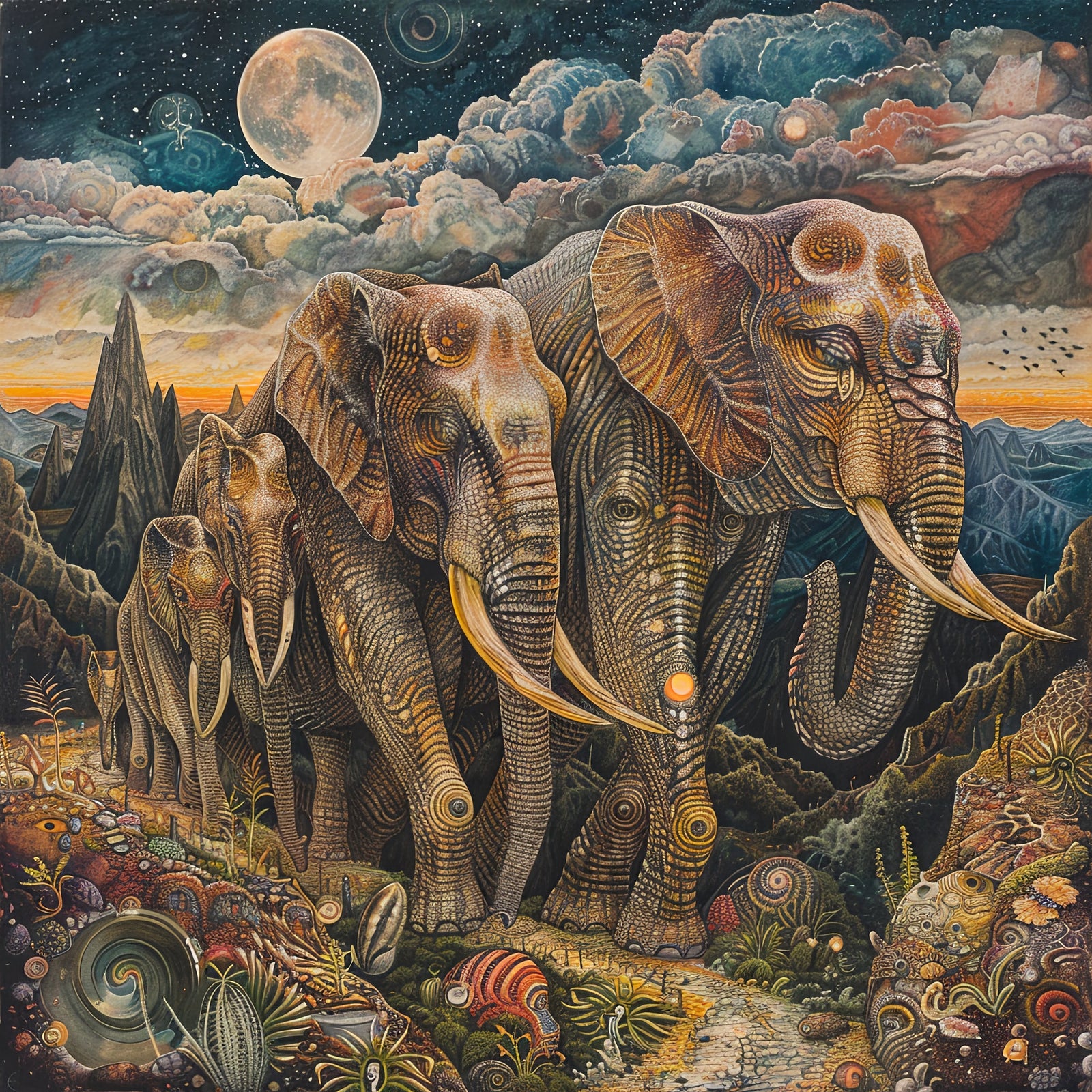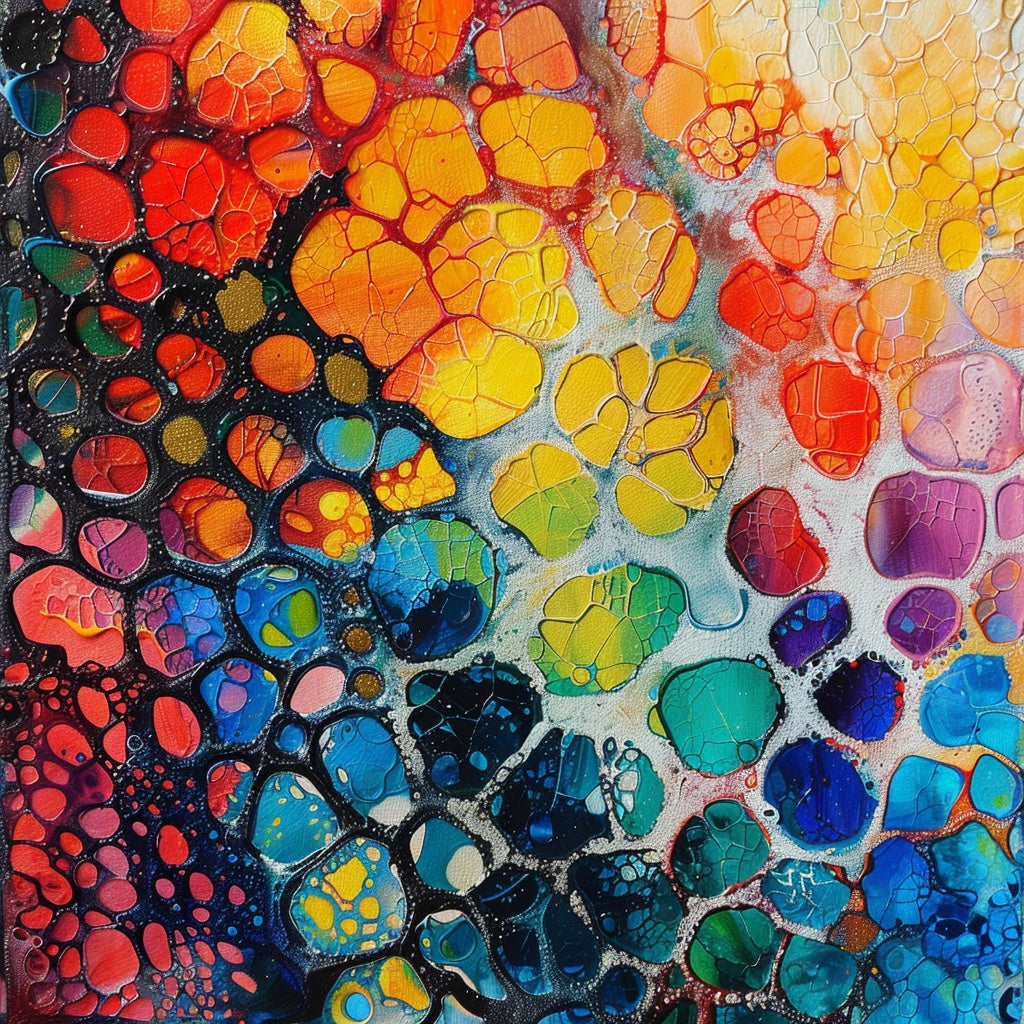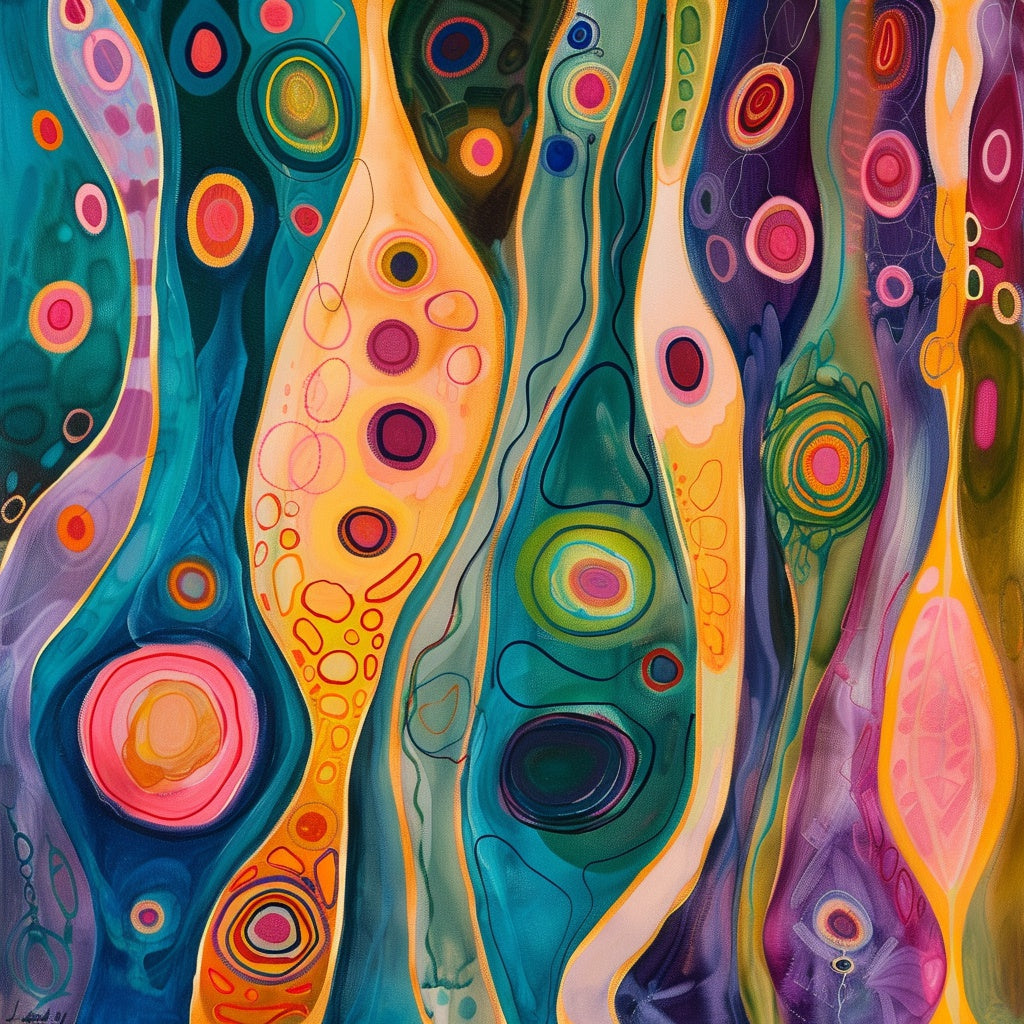Mastering the Art of AI: A Comprehensive Guide to Prompt Engineering
The rise of AI art generators like DALL-E, Midjourney, and Stable Diffusion has opened up a new frontier for creative expression. These tools use complex deep-learning models trained on vast datasets to generate images from text prompts [1]. However, the quality of the generated art is directly tied to the quality of the prompts you provide. This guide will equip you with the knowledge and techniques to master AI art prompt engineering.
Table of Contents
- Understanding the Fundamentals of AI Art Prompts
- Essential Elements of an Effective AI Art Prompt
- Best Practices for Writing AI Art Prompts
- Advanced Techniques for Prompt Engineering
- The Importance of Experimentation
- Conclusion
Understanding the Fundamentals of AI Art Prompts
AI art generators don't simply "translate" text into visuals. Instead, they use sophisticated algorithms, often diffusion models, to analyze the prompt and create images based on learned patterns and relationships [2]. The more precise and descriptive your prompt, the better the AI understands your vision and generates an image aligned with your expectations [2]. Think of a prompt as a recipe, where each element is an ingredient contributing to the final artwork [2]. Just as a chef requires the right ingredients in the correct order to prepare a delicious dish, you must provide clear and specific instructions to the AI to achieve your desired result [2].
AI Model Interpretation
It's crucial to understand that each AI model interprets prompts differently due to its unique training and configuration [3]. A prompt that works well in one model may not produce the same results in another [3]. Therefore, understanding the nuances of each model is essential for consistent, high-quality results [3].
Essential Elements of an Effective AI Art Prompt
A comprehensive AI art prompt should include several key elements [3]:
- Subject: The main focus of the image (e.g., a cat, a person, an object, a landscape) [3].
- Environment: The setting or background (e.g., a forest, a city, a beach, space) [3].
- Lighting: The quality, direction, and color of light (e.g., soft lighting, dramatic lighting, neon lights) [3].
- Colors: Specific colors or color palettes (e.g., "a vibrant sunset with hues of orange and purple") [3].
- Mood/Atmosphere: The emotional tone of the image (e.g., "a serene and peaceful landscape," "a dark and mysterious forest") [3].
- Composition: How elements are arranged in the frame (e.g., "a close-up portrait," "a bird's-eye view") [3].
- Style: Artistic style or technique (e.g., "photorealistic," "impressionist," "cubist") [3].
- Details: Any specific elements or features you want to include (e.g., "a cat with piercing blue eyes," "a futuristic city with flying cars") [3].
Best Practices for Writing AI Art Prompts
Description and Detail
Start with Clear and Concise Descriptions: Clarity is essential when writing AI art prompts. Begin with a straightforward description of your desired image. Avoid vague terms like "beautiful" or "interesting." Instead, use specific adjectives and nouns to paint a vivid picture for the AI [4]. For example, instead of "a cool landscape," try "a serene mountain lake at sunset with snow-capped peaks reflected in the calm water" [4].
Be Specific About Details: The more specific you are, the better the AI can understand your vision. Instead of simply stating "a bird," describe it in detail: "a vibrant blue macaw perched on a gnarled branch with a lush tropical rainforest in the background" [4].
Engage the Senses: Enliven your prompts with sensory details that enhance the mood and atmosphere. Instead of describing a scene visually, consider adding elements like sounds, smells, or sensations. For example, you could add "the gentle rustle of leaves" to evoke a sense of calmness or "echoing footsteps in a dark hallway" to create suspense [4].
Style and Composition
Specify Artistic Styles and Mediums: Don't be afraid to experiment with different art styles and mediums. AI art generators can mimic a wide range of artistic expressions. Try prompts like "a cyberpunk cityscape in the style of Van Gogh's Starry Night" or "a watercolor portrait of a wise old turtle wearing spectacles" [5]. You can reference specific art movements, artists, or even individual artworks to guide the AI's creative process [5].
Use Cinematic and Photographic Terms: To achieve more realistic outputs, incorporate cinematic and photographic terms into your prompts. For example, you can use terms like "movie still," "cinematic lighting," "depth-of-field," or even specify camera angles like "wide shot" or "close-up" [5].
Explore Different Perspectives: Reimagine your subject from different viewpoints. Don't limit yourself to the usual front view; consider bird's-eye, worm's-eye, or side views to add dynamism and visual interest to your images [5].
Prompt Structure and Refinement
Use Commas for Clarity: Separate each element in your prompt with commas to ensure clarity and proper structure. This helps the AI understand the different components of your vision and generate a more accurate representation [6]. For example: "A majestic lion, in a savanna, at sunset, golden lighting, cinematic."
Maintain Consistency in Prompts: Ensure consistency in your prompts by avoiding contradictory terms. For instance, using "realistic" and "abstract" together may confuse the AI generator [6].
Find the Optimal Prompt Length: While there's no strict word limit, aim for a prompt length that effectively conveys your vision without overwhelming the AI. As a general guideline, start with at least 3 to 7 words and add more details as needed [6]. Experiment with different lengths to find what works best for each AI tool [6].
Embrace AI Creativity: While it's important to provide clear instructions, don't over-engineer your prompts. Give the AI tool the freedom to interpret your instructions and surprise you with its creativity [6]. Sometimes, the most unexpected results can be the most rewarding [6].
Iterate and Refine Your Prompts: AI art generation is an iterative process. Don't expect to get the perfect image on your first try. Review the results, identify areas for improvement, and refine your prompts accordingly. Keep a prompt journal to track successful techniques and learn from your experiments [6].
Draw Inspiration from Others and the Community: Study successful prompts from other users and explore communities or forums where people discuss AI art prompts and share their experiences [6]. This can provide valuable insights and inspiration for your own prompt writing [6].
Advanced Techniques for Prompt Engineering
Negative Prompts
One way to refine your AI art is to tell the AI what you *don't* want to see. For instance, your text prompt could read: "A scene from the bottom of the ocean, but no submarines or other human technology" [7]. This helps to eliminate unwanted elements and focus the AI on your desired outcome [7].
Prompt Weighting
Some AI art generators allow you to assign weights to different parts of your prompt. This lets you emphasize certain elements and guide the AI's attention [8]. For example, in Midjourney, you can use "::" to assign weights. A prompt like "cat::3 sitting on a chair::1" would emphasize the cat more than the chair [8].
Seed Values
Seed values provide a starting point for the AI's image generation process [8]. Using the same seed value with different prompts can help you explore variations of a particular theme or style [8].
Combining AI Generation with Post-Processing
Don't be afraid to combine AI-generated images with traditional art techniques or digital post-processing tools [9]. This can help you further refine the image and achieve your desired artistic vision [9].
NLP Techniques for Prompt Optimization
Natural Language Processing (NLP) techniques can be used to further refine your AI art prompts [9]. Understanding how AI algorithms interpret and learn from keywords and tokens enables you to craft more effective prompts that generate higher-quality results [9]. Some NLP techniques that can be applied to prompt writing include [10]:
- Tokenization: Breaking down the prompt into individual words or phrases (tokens) to analyze their meaning and importance [10].
- Part-of-speech tagging: Identifying the grammatical role of each word in the prompt (e.g., noun, verb, adjective) to understand its function and relationship to other words [10].
- Sentiment analysis: Analyzing the emotional tone of the prompt to ensure it aligns with the desired mood and atmosphere of the image [10].
By incorporating these NLP techniques, you can gain a deeper understanding of how the AI processes your prompts and optimize them for better results [10].
Exploring Different AI Art Models
Different AI art models have unique strengths and weaknesses, and they may respond differently to the same prompt [11].
The Importance of Experimentation in Prompt Writing
Experimentation is key to mastering AI art prompts [12]. By trying different prompt writing techniques and observing the results, you can better understand how each AI model interprets your instructions and learn to fine-tune your prompts for optimal results [12].
For example, you can experiment with [12]:
- Varying levels of detail: Start with a simple prompt and gradually add more details to see how it affects the generated image [12].
- Different word choices: Try using synonyms or alternative phrasing to see how it changes the AI's interpretation [12].
- Combining different elements: Experiment with combining different subjects, styles, and mediums to create unique and unexpected results [12].
By actively experimenting and analyzing the outcomes, you'll develop an intuition for what works best and unlock the full creative potential of AI art generation [7].
Conclusion
Mastering AI art prompts is an iterative and creative journey. By understanding the fundamentals of how AI models interpret prompts, utilizing essential elements, practicing best practices, and embracing advanced techniques, you can unlock the full potential of these powerful tools. Remember to experiment, refine your prompts, and stay inspired by the vibrant AI art community. You can transform your vision into captivating AI-generated artwork with consistent effort and a passion for creativity.
Footnotes
[1] Artificial intelligence art - Wikipedia, accessed January 30, 2025.
[2] How to Write AI Art Prompts: a Beginner's Guide - Castmagic, accessed January 30, 2025.
[3] How to Write AI Art Prompts? (Examples + Templates) - Hypotenuse AI, accessed January 30, 2025.
[4] Introducing AI Prompt Analysis: How its Elevating the Creative Process in a Very Real Way, accessed January 30, 2025.
[5] How to write AI image prompts - From basic to pro - LetsEnhance, accessed January 30, 2025.
[6] How To Write AI Art Prompts That Deliver (2024) - Shopify, accessed January 30, 2025.
[12] How To Ceate AI Art Prompts (+ 50 Top Examples) - Gelato, accessed January 30, 2025.
[7] AI Art Prompts You Need to Try - Adobe Firefly, accessed January 30, 2025.
[8] How to Write AI Art Prompts Effectively (with Examples) - TechRepublic, accessed January 30, 2025.
[9] How to write AI art prompts - Collabra, accessed January 30, 2025.
[10] How to write AI art prompts [examples + templates] - Hootsuite Blog, accessed January 30, 2025.
[11] The top AI art generators | Zapier, accessed January 30, 2025.



Leave a comment (all fields required)